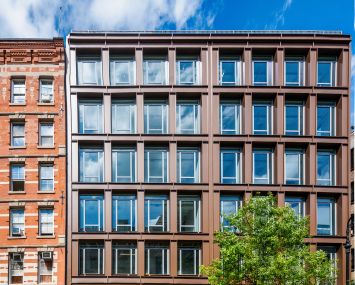If you’re a weekly reader of this column, then you’ll recall that, a few months back, I spoke about the recent increase in collaborative office spaces.
Then, just last week, I shared a rundown of top furniture trends, many of which mesh with these shared workspaces. Now, I’d like to delve even deeper and discuss pantries and their role in modern offices.
In the not-so-distant past, even as recently as five years ago, a pantry was a basic space for most commercial tenants. Perhaps there would be a regular and decaf pot of coffee, a laminate countertop, some packets of hot cocoa, soup mix or oatmeal, a small refrigerator and a water cooler but, typically, not much more.
Workers would head in and out to get what they needed, sharing a casual remark or two in passing, and then head right back to their desks. If they were in the mood for a latte or a lengthier conversation, well, then it was time to head to Starbucks or a business lunch outside of the office—essentially, someplace else where they could really sit and chat.
Fast forward to the year 2013, and these pantries are the minority. The office pantry has changed and grown in response to today’s work environment. Mobile technology means working away from one’s desk, perhaps on a laptop or iPad, is the norm. Teaming up on projects is the rule, not the exception. As such, the pantry has become the perfect place to share ideas or entertain clients. Whether the office consists of 10 employees or 200, the pantry has become a real focal point in workspace design.
The look can be as individual as the company and can depend on its size, its functions and the roles a firm would like the space to serve. Options include spacious, built-in refrigerators, full kitchens and islands with bar or café-style seating for workers to take a break or dine at, rather than eating lunch hunched over their desks. Upgraded amenities—think a Keurig or Nespresso machine—also make the space more welcoming and let everyone customize their own experience. One size need not fit all.
Pantries are also the ideal place for companies to get a bit more creative—they don’t need to fit the corporate mold. Even if your workspace is conservative, you can be a bit more unorthodox when choosing colors, finishes and lighting for this part of the office. Here’s your chance to incorporate stainless steel, glass accents, bolder colors and pendant lighting. You can also use durable Caesarstone countertops in a whimsical color to express your company’s style or in a look that’s made to mimic raw concrete. Put some bar stools in the mix, and you instantly create a more relaxed vibe.
Now, consider pantry placement. It used to be the pantry was tucked in an unused (and often undesirable) middle section of the office and prime views were reserved for corner offices. This is no more! Pantries are now being designed to take advantage of the best, most light-filled areas of the office and with views that can be enjoyed by every member of the staff, not just top management.
It is common knowledge that time away from the office reduces productivity and that a happy work force results in better employee retention. Taking the extra time to plan a pantry is a good investment, particularly if a company plans on staying, and growing, in a space long-term. While office culture has undoubtedly changed in the past decade, these new and improved pantries look like they’re here to stay. Incorporating a modern pantry from the get-go—or thinking about it come renovation time—is simply smart business.


